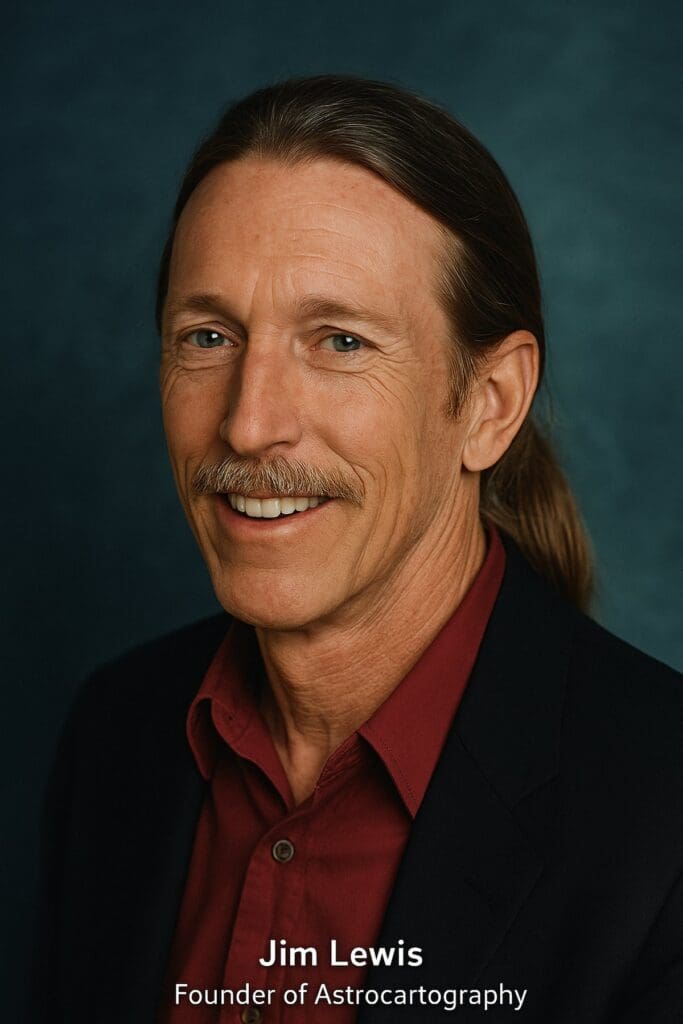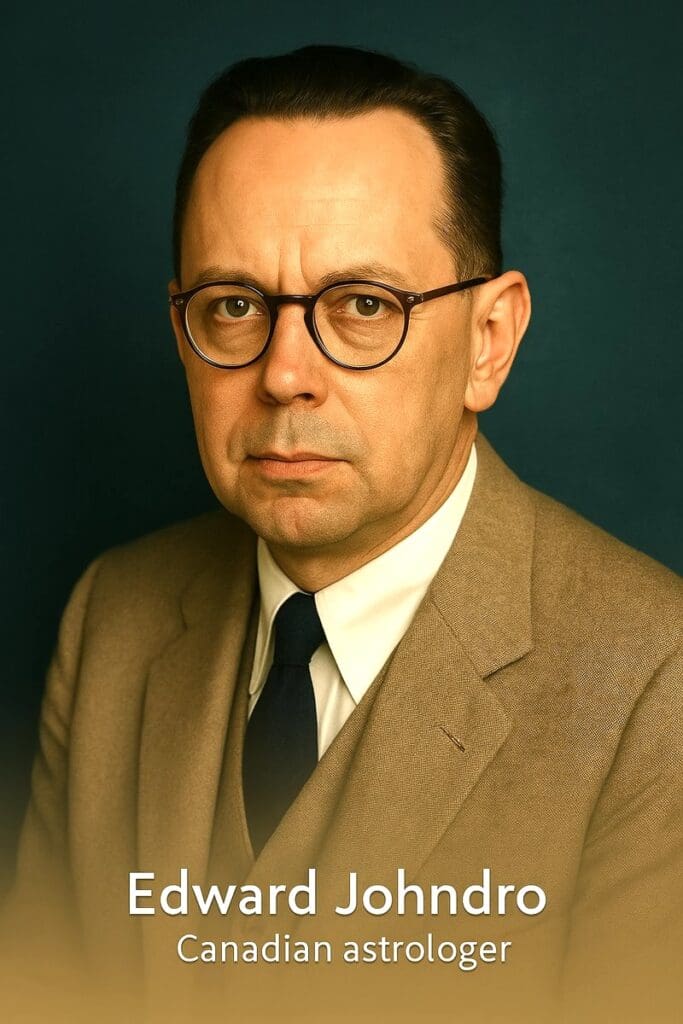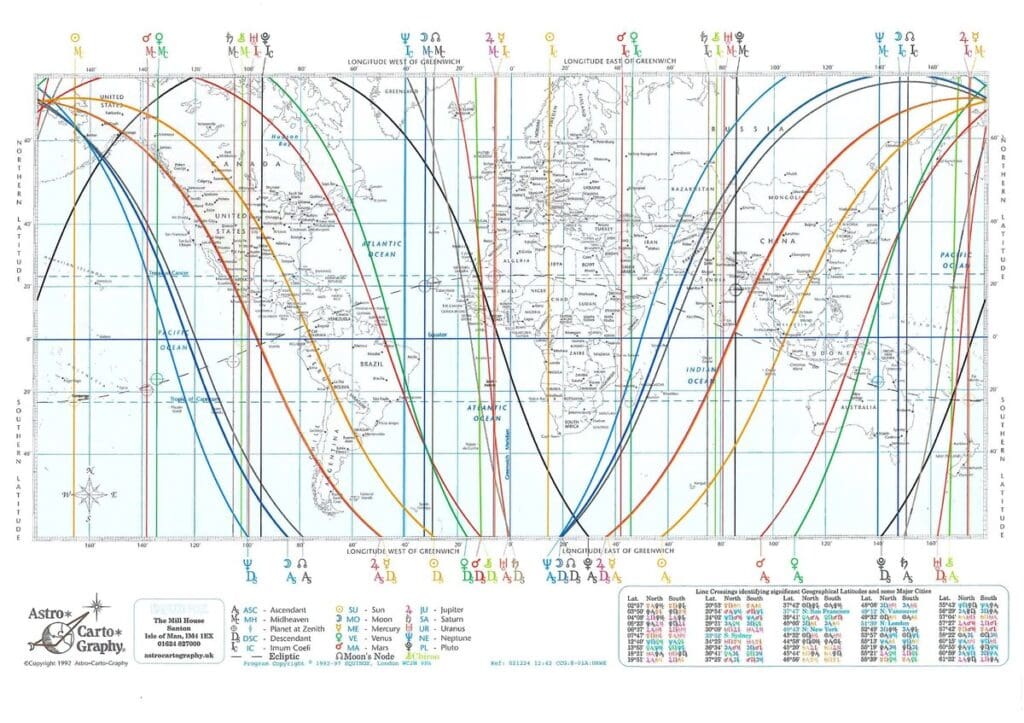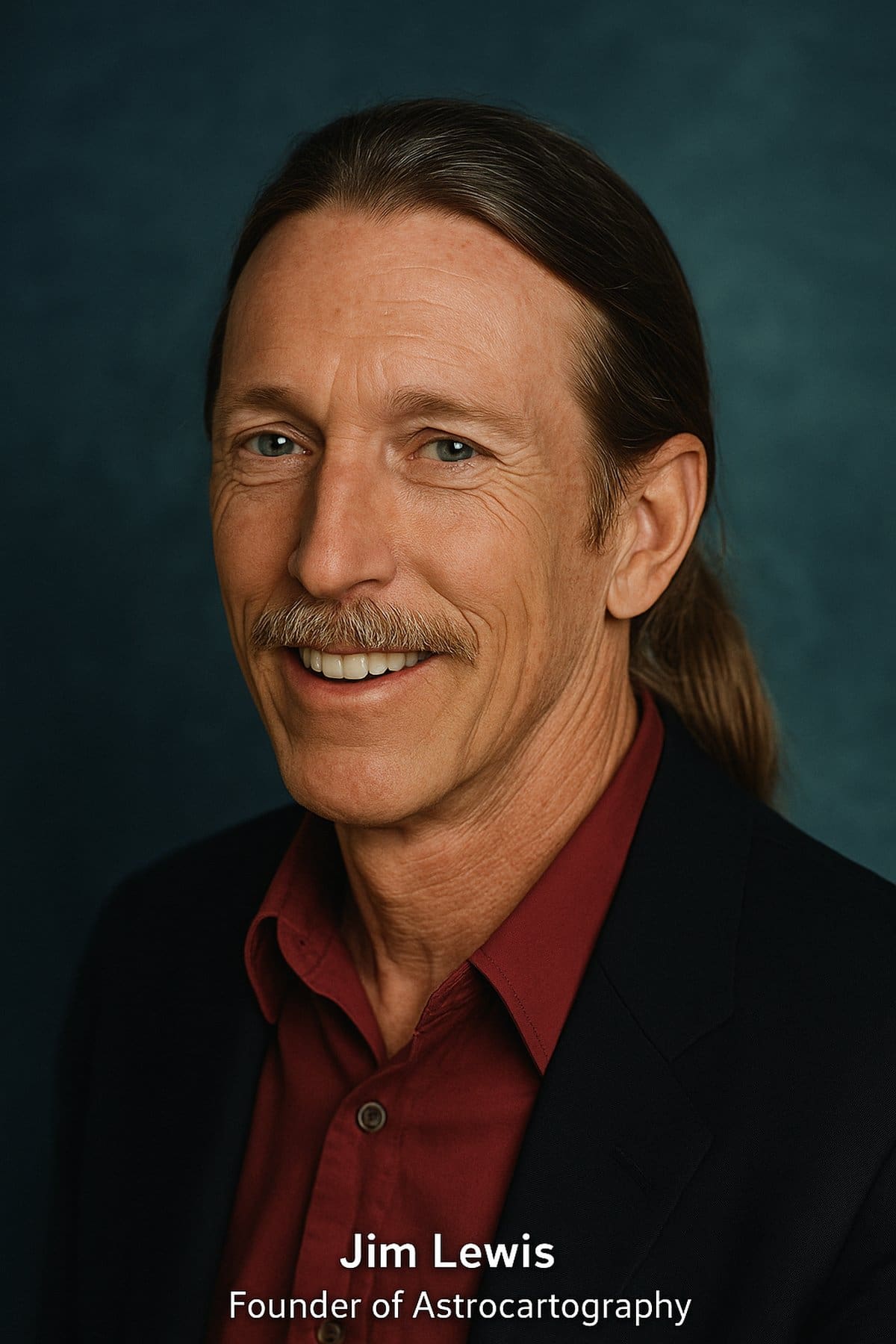Astrocartography isn’t new but it’s not always well understood. In this article on the state of astrocartography today, I explain how the method developed, what still holds true today and why certified practice matters more than ever.
Astrocartography, as it’s practiced today, did not emerge from nowhere.
It is the result of decades of international effort, intellectual curiosity and rigorous refinement. While the term itself may be attributed to Jim Lewis in the 1970s, the deeper truth is that this field stands on the shoulders of astronomers, statisticians, cartographers, astrologers and geographers who came before him. To understand astrocartography as it exists now, and to grasp its value, we must trace its evolution, acknowledge its certified methodology, and examine the precarious state of its continuity today. The advent of social media isn’t it’s best advertising board.

From Map to Method: A Global Legacy
Jim Lewis is rightly credited with creating the modern, codified version of Astro*Carto*Graphy. What made his contribution extraordinary was not a new philosophical idea, but the complete professionalisation of a scattered concept. Lewis secured a U.S. patent in 1981, created Astro*Carto*Graphy lectures and workshops, developed mapping software and established a certification programme. But even Lewis knew he had not invented the core ideas from nothing.
As Robert Currey, UK publisher of the reissued Astro*Carto*Graphy Explanatory Handbook, writes:
“Locational astrology is not new. Perhaps originating long before the Three Wise Men converted stellar observations onto maps to locate a special birth… But Jim was the first to develop detailed world maps, a complete technique, a systematic written ‘cook-book’ analysis, a trademark, software, a commercial service, lectures, courses, articles and a certified examination in the field. He made what was an obscure technique, accessible. On that no one could touch him.”
This acknowledgment from Currey is not incidental as a Jim Lewis Map software licensed operator. His perspective confirms that A*C*G is a technique built on accumulated global knowledge, not American technological invention.
Astrologers Began to Think Globally
Kenneth Irving, co-author of Jim Lewis’ posthumous “The Psychology of Astro*Carto*Graphy”, states:
“sometime in the late 19th century, astrologers began to consider how to extend the birth chart beyond the birthplace.” They understood how a person’s life might be changed by moving.
He continued: “some of those astrologers even tried to map a horoscope onto the globe itself before 1970s. This was mostly the province of technical astrologers and they were used mostly for looking at world events, not people.
The Angular Foundation: Who Truly Came First? – The Lineage Behind Modern Astrocartography
To understand the strength of Astro*Carto*Graphy, one must begin with the power of planetary angularity and the planets on the AC, DC, MC and IC.
Edward L. Johndro (1882–1951, Quebec, Canada) was the first modern French-speaking astrologer to argue that the angular power of planets – particularly at the Midheaven (MC) – radiated across the Earth’s surface. In “The Earth in the Heavens” (1929–1934), he proposed that planetary fields could be mapped to specific terrestrial coordinates. His vision, grounded in electromagnetic field theory (he himself being a radio frequency engineer), made him one of the first to bridge astrology and geography in practical, modern terms.
Johndro: The Visionary Who Mapped the Earth

Building on earlier geodetic efforts, Johndro’s maps linked angles to location and offered mathematical tools for geographic resonance. His ideas predated and anticipated later concepts of angular lines determining one’s experience of place – central to modern astrocartography.
The Gauquelins: Statistical Proof Meets Planetary Power
Decades later, Michel and Françoise Gauquelin (France and Switzerland) provided statistical validation of Johndro’s core hypothesis. My premise is that documents in French (from Quebec) were transmitted to his peers in Europe. Their work in the 1950s–60s introduced the “Gauquelin sectors”. These sectors demonstrated that when planets, notably Mars, Jupiter and Saturn, placed near the Ascendant or Midheaven strongly correlate with notable public achievement.
The Gauquelins referred to these as “plus zones”. confirmed what astrologers had long suspected: planets on angles are amplified. But now, there was hard data to support it. Gauquelin’s statistical methods made planetary angularity a researchable phenomenon – not just an interpretive tradition.
This sequence – Johndro’s electromagnetic models in the 1930s, followed by Gauquelin’s statistical proof in the 1950s – lays a strong case that the foundation of modern astrocartography was, in fact, European.
Then Came Jim Lewis: Systematising a European Inheritance
Jim Lewis, synthesised these ideas and translated them into the form we know today: AstroCartoGraphy maps. He was not the originator of the concept of planetary angularity or its geographic applications. However, he most definitely was the first to design an accessible system around it.
He turned the idea into a fully functioning methodology: patenting the technique in 1981, teaching it through courses, developing software, and creating an international certification process. It was a remarkable act of organisation, marketing and vision. But it was not an invention in the strict sense. Rather, Lewis’s genius was in professionalising a lineage.
Unearthing Astrocartography’s Untold European Origins – The Foundations of a Global System
Astrocartography is not new. It’s not mystical or American but a global, empirical system built upon a deeper lineage of thinkers than most realise.
As a bilingual, certified Astrocartographer based in Greater Geneva, I maintain a growing library of rare, untranslated French astrology books. Figures like Alexandre Volguine and Sepharial added foundational tools such as ProtoMaps of geodetic equivalents.

The Astrocartography Legacy We Risk Losing
According to the Continuum Directory, only 97 astrologers worldwide remain certified in Jim Lewis’s original astrocartography method. Of those, at least 14 are inactive or untraceable. That leaves fewer than 80 certified practitioners and the number continues to shrink.
Meanwhile, mass-market ACG apps strip the methodology of its core interpretive elements. They ignore the critical difference between natal and relocated charts and omit overlay interpretations with local space and geodetics. This erases the context that makes the practice meaningful. The result is algorithmic convenience, but no real in-depth clarity.
This matters because astrocartography was never just American software. Astrocartography’s origins were shaped by European thinkers. It was refined through empirical observation and preserved by only a handful of committed professionals today.
The Last Licensed Distributor of Jim Lewis’s Original Astro*Carto*Graphy Maps (Isle of Mann, UK)
In 2025, Robert Currey, Astrocartography UK, remains the World Wide distributor of the original maps licensed by Jim Lewis. He was one of just three practitioners worldwide to receive official licensing rights before Lewis’s death in 1995. His maps are still available through that site, offering the highest print quality and interpretive integrity. I’ve personally purchased A*C*G and C*C*G Maps from Robert Currey and his wife, Karen Chiarello, and confirm their excellent services. These original resources still hold immense value for serious practitioners today.

From Its Roots in Europe, Astrocartography is Now Practised Globally
AstroReloc’s consulting base in Greater Geneva reflects a broader truth: astrocartography’s roots are not purely American.
Alexandre Volguine in Nice, France, as well as other European contributions to this field run deep. In my next blog, I will explore this underrecognised astrocartographical lineage, including ProtoMaps, geodetic innovations and empirical research. Blog 3 will take a look at the people who preserved astrocartography’s legacy.
If you’re seeking clarity about your current location, or investigating a possible relocation, you deserve more than a map overlay. You deserve a practitioner who works with and understands the planetary roots beneath your chart.
Start your Location Diagnosis →

Comments +